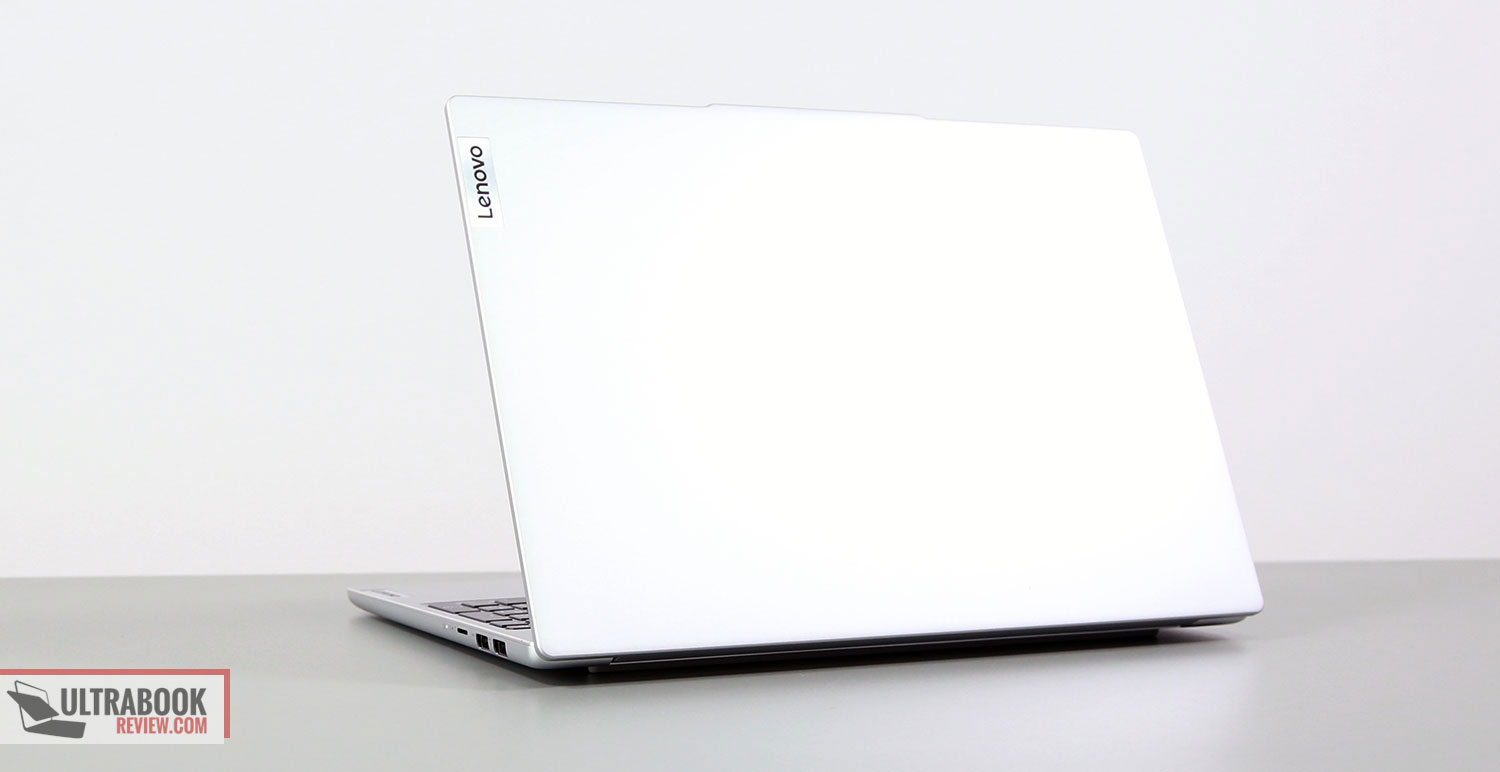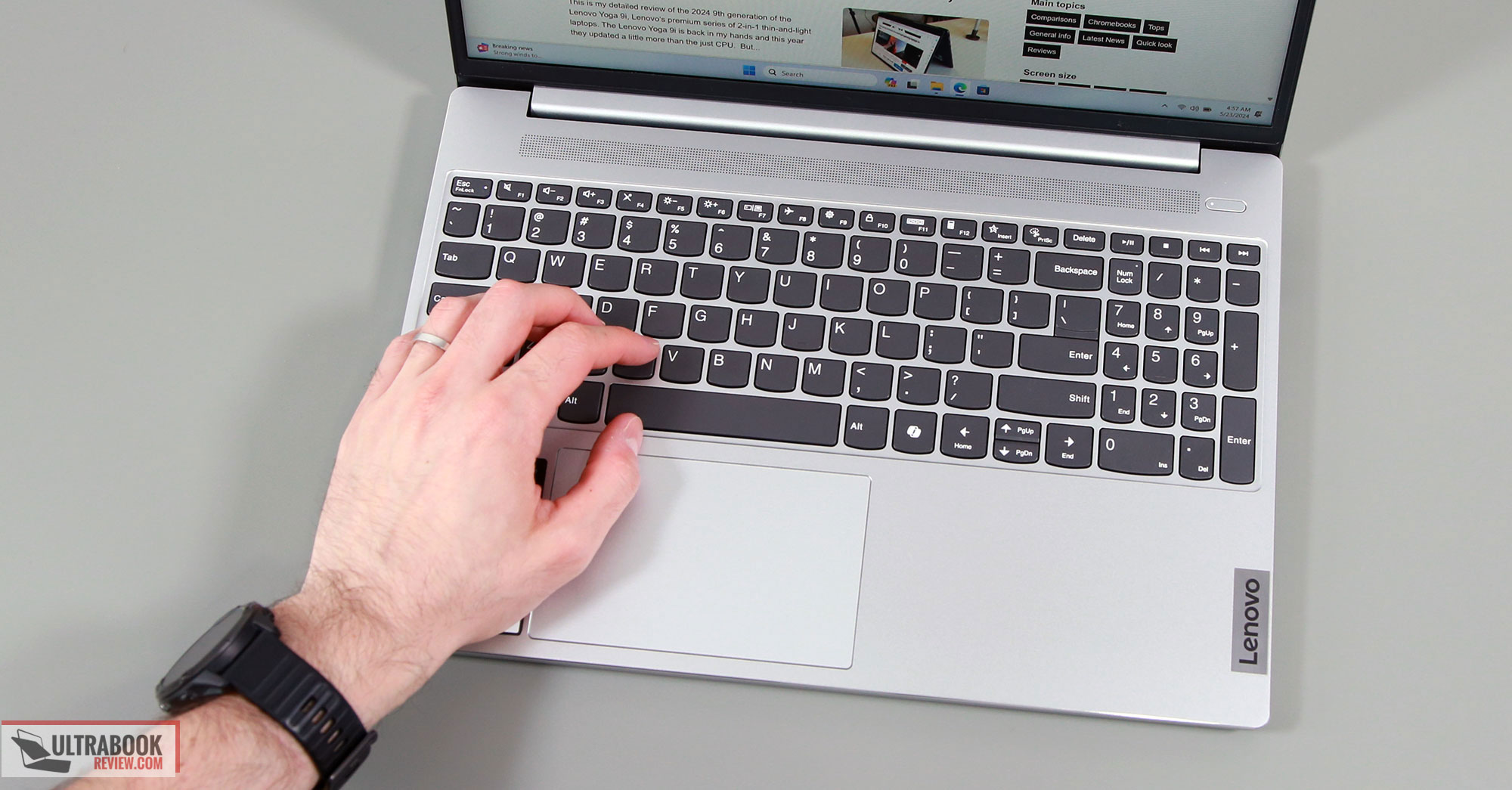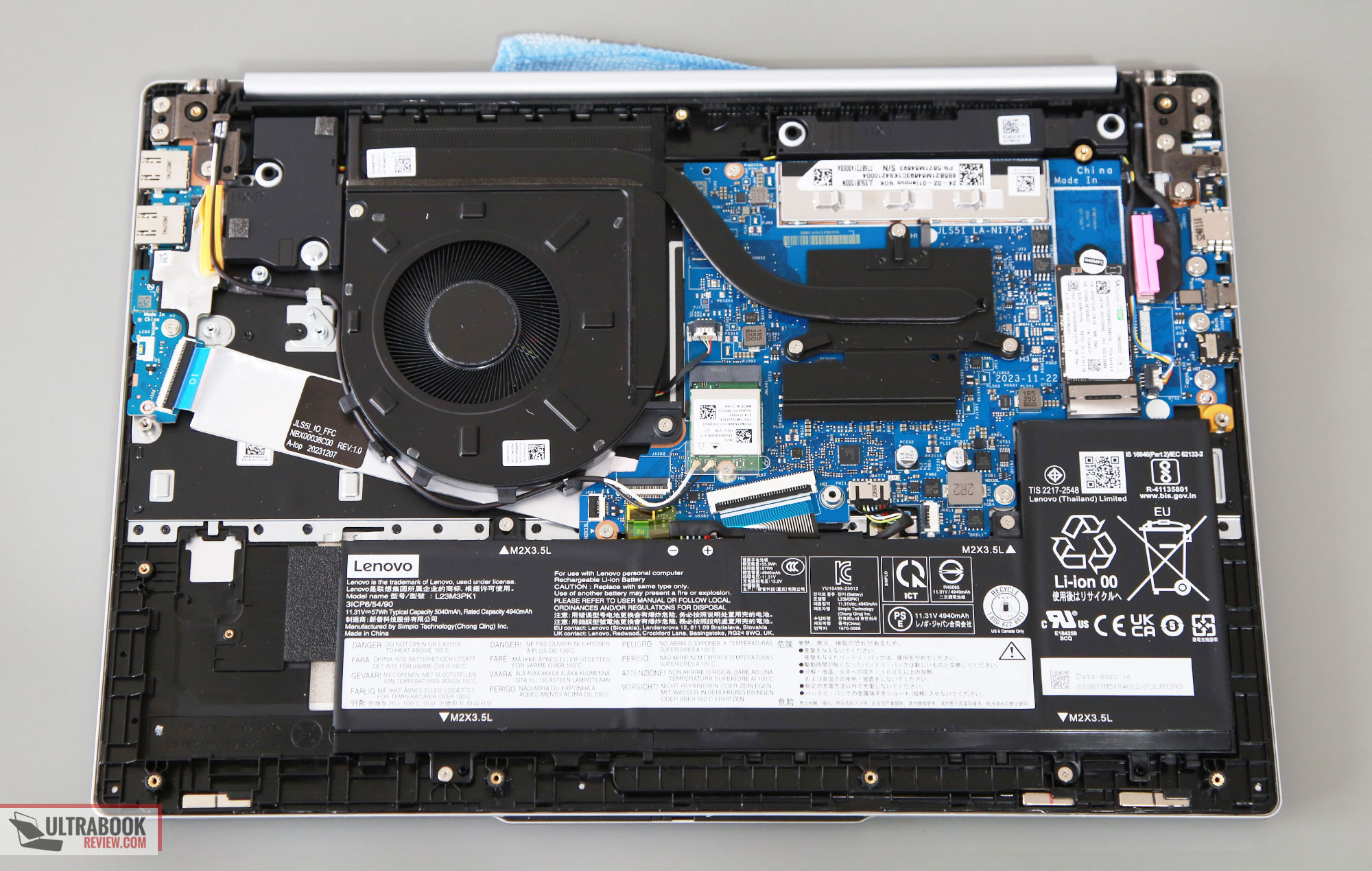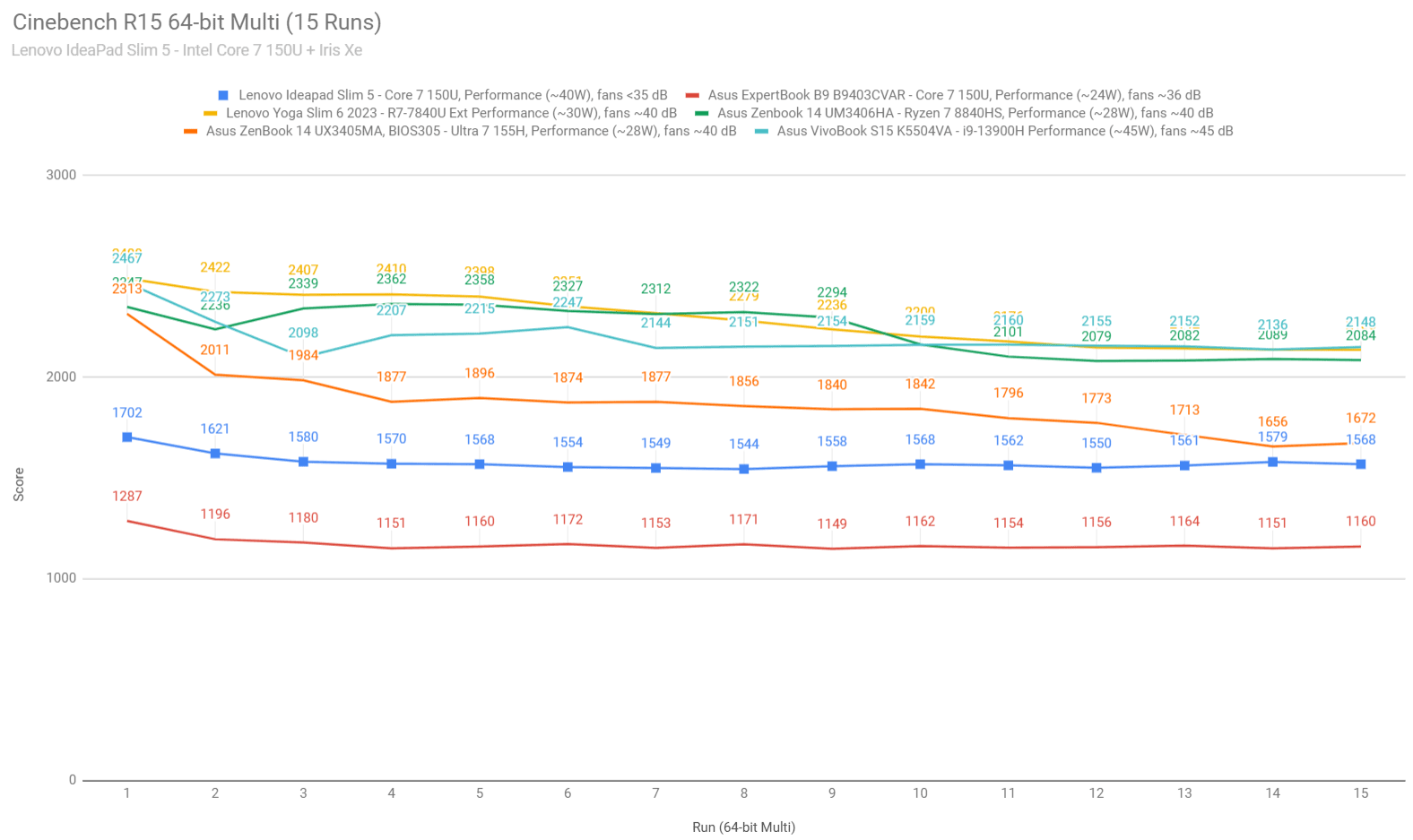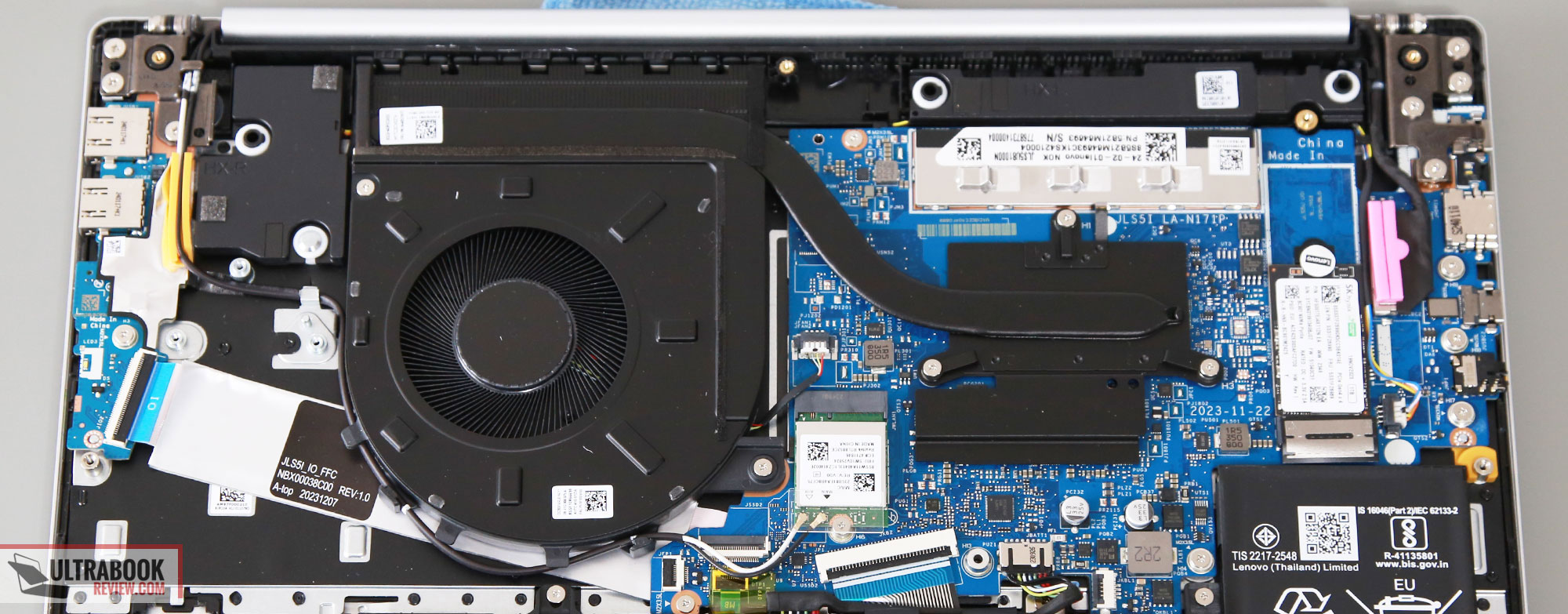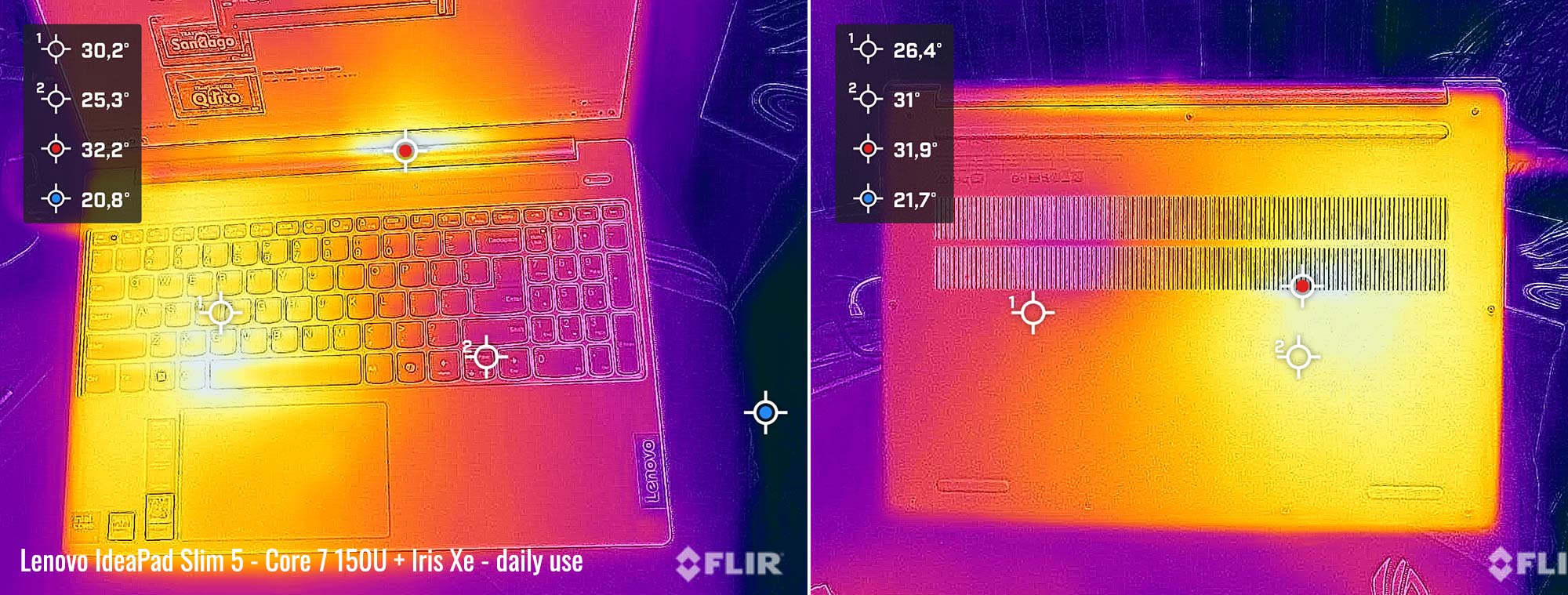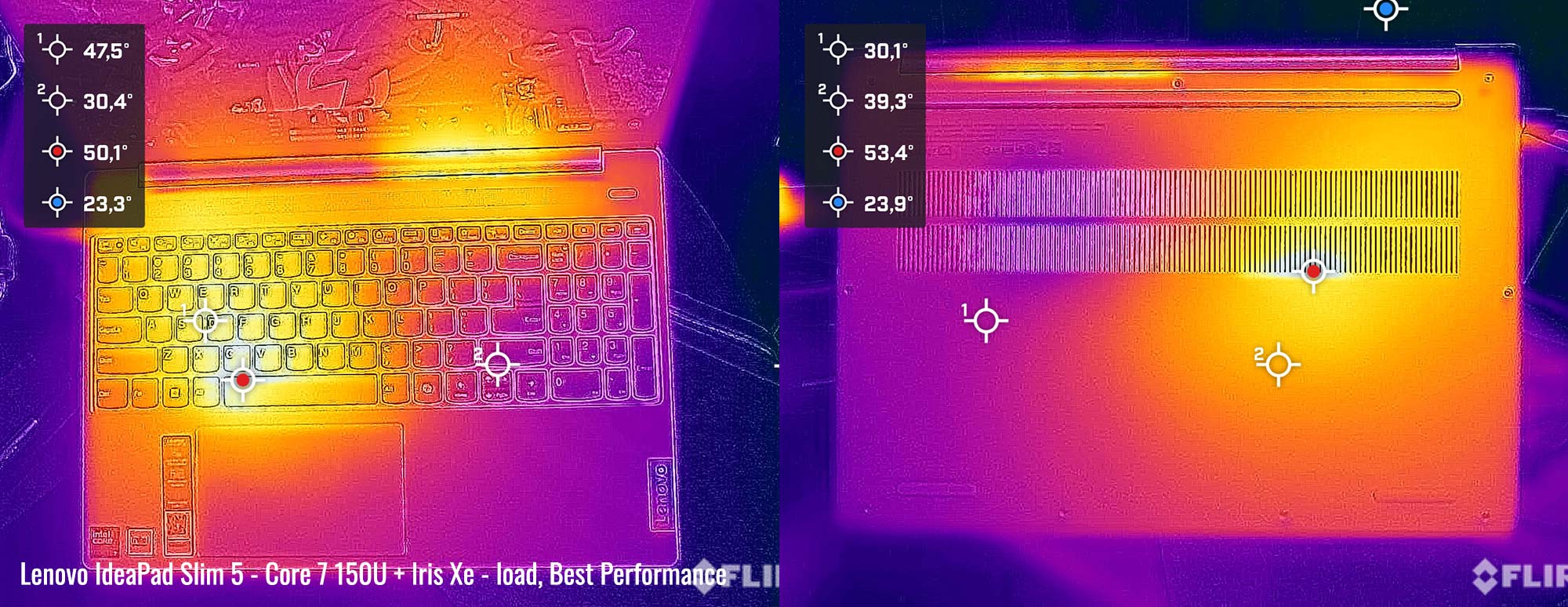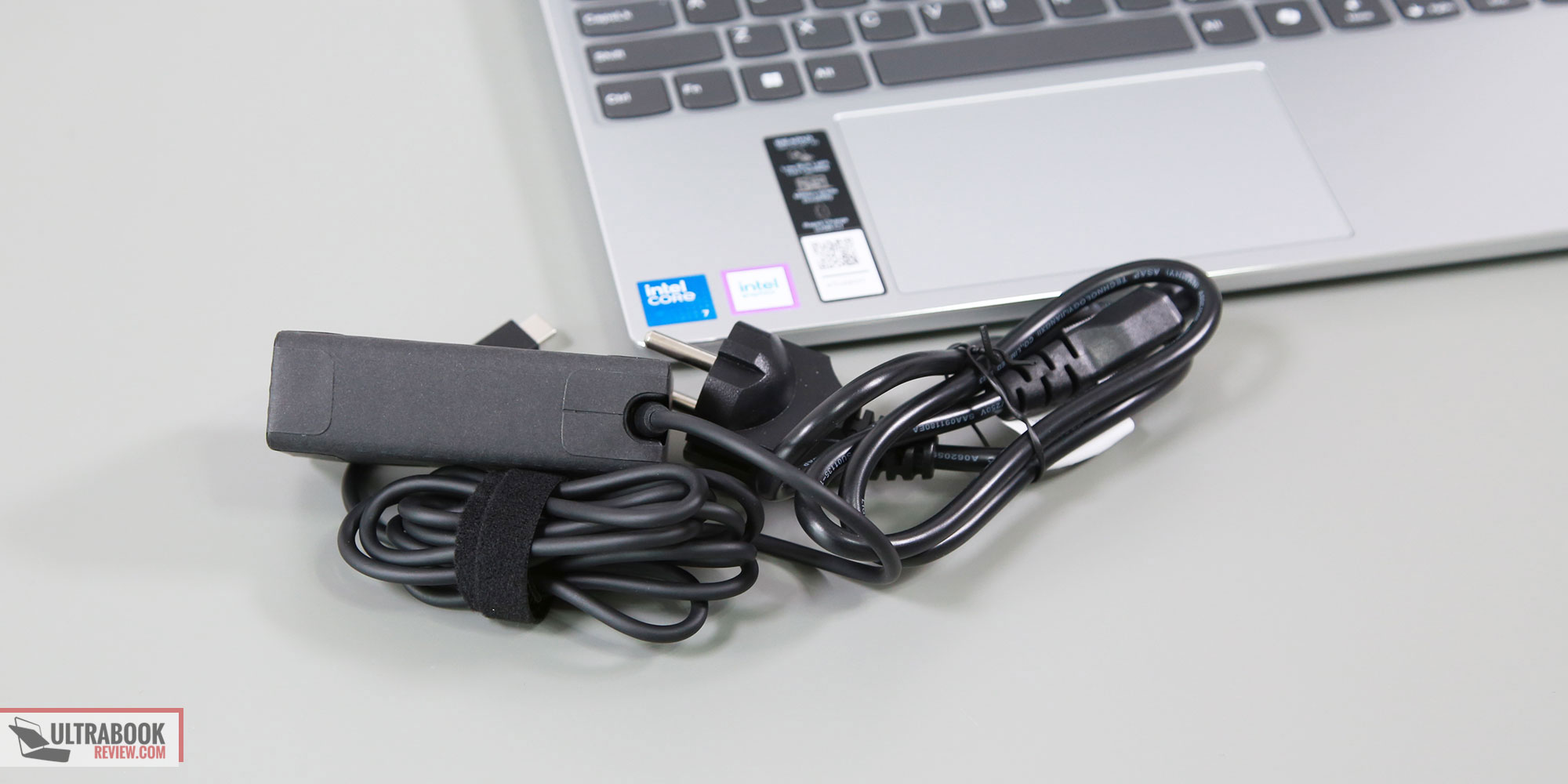Lenovo IdeaPad Slim 5 review (2024 15IRU9 model, Core 7 150U, IPS)
This is my detailed review of the Lenovo IdeaPad Slim 5 series, a budget lineup of everyday use laptops.
This model that I have here is the 15-inch variant, but Lenovo offer this series in 14 and 16 inch versions as well, similar in all ways except for the size of the display.
I bought this laptop recently as a potential daily-driver for my dad, and because I was curious about the overall capabilities of the Intel Core 7 150U hardware platform that motorizes this configuration. I paid roughly 800 EUR for this unit, which is quite steep for what you’re getting, but I’m expecting this will get cheaper later in the year.
So, having used this laptop for the last few weeks, here are my thoughts and impressions.
Specs as reviewed – Lenovo IdeaPad Slim 5 laptop
| Lenovo IdeaPad Slim 5, 15IRU9 gen 9 series, 2024 model |
|
| Screen | 15.3 inch, IPS, 16:10 aspect ratio, non-touch, matte, WXGA 1920 x 1200 px, 60Hz refresh, 300-nits SDR brightness, 100% sRGB colors |
| Processor | Intel Raptor Lake Core 7 150U, 2PC+8Ec/12T, up to 5.4 GHz |
| Video | Intel Iris Xe, up to 1.3 GHz |
| Memory | 16 GB LPDDR5x-5200 (soldered), up to 32 GB |
| Storage | 1TB M.2 NVMe SSD (SK Hynix ) – single M.2 2280 slot |
| Connectivity | Wireless 6E (Realtek RTL8852CE) 2×2, Bluetooth 5.3 |
| Ports | left: 2x USB-C 3.2 gen1 with PD 3.0 and DP 1.4, HDMI 1.4, audio jack right: 2x USB-A 3.2 gen1, one always-on, micro SD card reader |
| Battery | 57 Wh, 65W USB-C charger |
| Size | 344 mm or 13.52” (w) x 238 mm or 9.38” (d) x from 17.5 mm or 0.7” (h) |
| Weight | 3.95 lbs (1.8 kg) + .32 (.7 lbs) for the USB-C charger and cables, EU version |
| Extras | clamshell format with 175-degree hinge, single-fan single-radiator cooling, full keyboard with NumPad, non-backlit – optional with white lighting, plastic touchpad, 2MPx FHD webcam with optional IR, privacy shutter, no fingerprint sensor, stereo up-firing 2x 2W speakers, Cloud Grey color |
Design, build quality – refined chassis and ergonomics
This IdeaPad Slim 5 is a pretty nicely built laptop, fairly compact and thin for its size, but not that lightweight. It weighs about 2 kilos, and I was expecting less.
The solid build quality with sturdy pieces on anodized aluminum used for the lid, interior and underside, as well as the fairly beefy thermal module for this class, are among the culprits that add to the total weight. But these mean the laptop feels strong with daily use, doesn’t flex in any noticeable way, and doesn’t squeak when picked up and used. The surfaces feel fairly premium to the touch as well, as mostly everything is metal, with the exception of the hinge cover and the bezels around the display.
As far as the design goes, this IdeaPad Slim 5 is a standard consumer-class Lenovo chassis, with a smudge-friendly silver color and limited branding on the lid and arm-rest. You should peel off all those stickers plastered to the left of the touchpad, though, they’re ugly and crooked.
As for the ergonomics, I have no major complaints. The rubber feet on the bottom are small, but keep the laptop well anchored on a desk, the front lips and corners are slightly rounded so they don’t bite into the wrists, the screen goes back almost flat to about 175 -degrees, and the hinge allows to pick up the display and adjust it single-handedly, but also keeps the display firmly in place with daily use, without it wobbling when typing or moving the laptop around.
I also like how Lenovo positioned the status LEDs on the right edge, but there’s still an always-on light in the line of sight, in the power button. At least it’s dim and doesn’t bother much when using the device at night.
I’ll also mention that there’s a punctured grill above the keyboard, under the screen, and that’s for ventilation and hides speakers underneath.
The IO is placed on the sides and includes USB-C and USB-A ports, HDMI, audio and a card-reader. That should be fine for most users, although some of the ports are older-generation. Plus, since both USB-Cs are on the left edge, you can only charge the laptop on that side.
Keyboard, touchpad
For inputs, this series implements a full keyboard with a NumPad section and well-sized touchpad.
The keys feel quite shallow, as this is a short-stroke implementation, and the keycaps are a coarser and harsher-feeling plastic, so not quite as nice as on Yogas or ThinkPads. But overall this is a decent typer, as long as you’re alright with short-stroke keyboard implementations.
What this particular keyboard lacks is backlighting, as Lenovo offers either this non-backlit or a white-lit variation for this series. I didn’t pay enough attention to the specs and was surprised to find that this is a non-backlit model. At 800 EURs, that’s not acceptable.
The touchpad works fine, and it’s a decent plastic surface that handles swipes, gestures and taps well. It sounds rather hollow when tapped firmer, though, and the physical clicks in the corners aren’t great either, rather stiff and clunky. So overall, this touchpad is usable, but not that great for this class.
As for biometrics, there aren’t any on this model that I got. However, you will find this series with an IR capable camera, which is optional. So make sure you read the specs more thoroughly than I did.
Matte IPS display
For the screen, Lenovo offers this IdeaPad Slim 5 series with a 15.3 inch 16:10 matte IPS panel of middling quality.
Now, for general use this is an alright display, with around 300-nits of brightness, 1000:1 contrast and 100% sRGB colors. But if you’re used to higher quality panels as I am, you’ll have a harder time accepting this one, especially in brighter environments where the brightness isn’t quite enough.
- Coverage: 98.9% sRGB, – AdobeRGB, – DCI-P3;
- Max brightness in the middle of the screen: 278 cd/m2 on power;
- Gamma: 2.2
- Contrast at max brightness: 1000:1
- Native white point: 6600 K;
- Black on max brightness: 0.44 cd/m2.
The panel is well calibrated out of the box and doesn’t show uniformity inconsistences or light bleeding around the edges.
Hardware and performance – Intel Core 7 150U, Iris Xe
Our test model is a top-specced configuration of the 2024 Lenovo IdeaPad Slim 5, code name 15IRU9, with an Intel Core 7 150U processor and Iris Xe integrated graphics, 16 GB of LPDDR5x-5200 memory, and a middling 1TB gen4 SSD.
Disclaimer: I bought this unit from a local store, so this is a retail unit. I tested it with the software available as of mid-May 2024.
Spec-wise, this series is based on a 2024 Intel platform that’s a close rebadge of the 2023 Raptor Lake Core U hardware. That means this Core 7 150U processor is a minimally refined and mostly rebadged Core i7-1355U. So it’s not a Meteor Lake Core Ultra processor, thus it doesn’t get Low Power Efficiency Cores or Arc graphics.
Hence, the Intel Core i7 150U is a hybrid design with 2 Performance Cores, 8 Efficiency Cores, and a total of 12 combined Threads. It does run at fairly high power levels here, at 30-40W sustained, but the sustained performance is still limited by the overall design in comparison to other Intel and AMD platforms available out there today.
Graphics are handled by the integrated Intel Xe chip, running at up to 1.3 GHz.
Our configuration also comes with 16GB of LPDDR5x-5200 memory and a mid-level SK Hynix SSD, in a 2242 format. The SSD is upgradeable and can be replaced with M.2 2242 or 2280 drives.
You need to remove the back panel in order to get inside to the hardware components, which is held in place by a couple of Torx screws. There’s no pop-up screw so you’ll need to work around the clips with a prying tool.
Inside you’ll find the motherboard with the thermal module, the battery, speakers, and the SSD and WiFi slot. Because the hardware is also available in smaller 14-inch formats, there’s plenty of unused space inside. Still, worth noting that some of the extra space was allocated to a larger speaker than what’s offered with the 14-inch model.
As far as the software goes, I put a fresh copy Windows on this laptop and the Vantage control app. There are no power controls in Vantage for the IdeaPad lineups, so you need to switch between the Windows 11 profiles: Best Performance, Balanced and Best Power Efficiency. Sustained power limits vary between these, but the fan tend to keep quiet on all, never going over 35 dBA. Furthermore, the fan keeps idle with light use and streaming. We’ll discuss the noise profiles further down, in the next section of the review.
We’ll get to that in a bit, but first, here’s what to expect in terms of speeds and temperatures with daily chores such as streaming video, editing text, or browsing the web.
Productivity Performance and Benchmarks – Intel Core Ultra (Meteor Lake), Arc graphics
On to more demanding loads, we start by testing the CPU’s performance in the Cinebench R15 loop test.
On the Best Performance mode, the Core 7 150U processor peaks at ~55W of power for a little while, and then stabilizes at around 40W in this test, with temperatures in the high-90s Celsius, and fan-noise levels of sub 35 dBA. These result in sustained Cinebench scores of around 1500 points, high for this sort of platform.
Balanced mode doesn’t seem to change anything in this test, so I’ve skipped it.
However, on Power Efficiency, the processor quickly drops to 20W, with barely audible fans and temperatures in the mid-60s C. At 20W, the Core 7 150U processor scores around 1150 points, roughly 70% of the Performance scores.
Finally, our sample performed well on battery, stabilizing at around 32W of power on the Performance mode. The scores are nearly on par with the plugged-in Performance mode.
All these are illustrated in the graph below.
To put these in perspective, here’s how this Core 7 150U implementation fares against other hardware platforms available in similar devices. It’s faster than older Core U platforms, but at the same time, you’ll find as much as 50% faster hardware in similar devices today, in this sustained CPU test.
We then went ahead and further verified our findings with the more taxing Cinebench R23 loop test and in Blender. On Blender, the CPU stabilizes at lower power than in Cinebench, at around 32W, with still high temperatures in the 95+ C.
We then ran the 3DMark CPU profile test.
Finally, we ran our combined CPU+GPU stress tests on this notebook, on the Performance profile. 3DMark stress runs the same test for 20 times in a loop and looks for performance variation and degradation over time. This unit passed the test with the laptop flat on the desk, which means the performance is not impacted in longer-duration sustained loads, as the heat builds up.
Benchmarks results and performance summary
With that out of the way, let’s get to some benchmarks. We ran our standard set of tests with the laptop on Best Performance mode and the screen set at its default FHD+ resolution.
Here’s what we got.
- 3DMark 13 –CPU profile: max – 4718, 16 – 4378, 8 – 3701, 4 – 2571, 2 – 1912, 1 – 1089;
- 3DMark 13 – Fire Strike: 4900 (Graphics – 5202, Physics – 20889, Combined – 1897);
- 3DMark 13 – Night Raid: 17566 (Graphics – 20931, CPU – 9193);
- 3DMark 13 – Time Spy: 1763 (Graphics – 1565, CPU – 6307).
- Uniengine Superposition – 1080p Extreme: 1024;
- Uniengine Superposition – 1080p Medium: 3083;
- PCMark 10: 6116 (Essentials – 11549, Productivity – 7566, Digital Content Creation – 7105);
- GeekBench 6.2.2 64-bit: Multi-core: 9747, Single-Core: 2668;
- CineBench R15 (best run): CPU 1690 cb, CPU Single Core 290 cb;
- CineBench R20 (best run): CPU 4242 cb, CPU Single Core 772 cb;
- CineBench R23: CPU 10686 pts (best run), CPU 9974 pts (10 min loop test), CPU Single Core 1997 pts (best run);
- CineBench 2024: GPU – pts, CPU 584 pts (best single run), CPU 583 (10 min run), CPU Single Core 114 pts;
- x265 HD Benchmark 64-bit: 38.26 s.
And here are some work-related benchmarks, on the same Best Performance profile:
- Blender 3.4.1 – BMW Car scene- CPU Compute: 4m 20s ;
- Blender 3.4.1 – Classroom scene – CPU Compute: 10m 49s;
- Blender 3.6.5 – BMW Car scene- CPU Compute: 4m 30s ;
- Blender 3.6.5 – Classroom scene – CPU Compute: 10m 55s;
- SPECviewperf 2020 – 3DSMax: 14.06;
- SPECviewperf 2020 – Catia: 12.85;
- SPECviewperf 2020 – Creo: 24.97;
- SPECviewperf 2020 – Energy: 3.87;
- SPECviewperf 2020 – Maya: 60.63;
- SPECviewperf 2020 – Medical: 7.74;
- SPECviewperf 2020 – SNX: 6.49;
- SPECviewperf 2020 – SW: 18.00;
- V-Ray Benchmark: CPU – 6250, CUDA – 178.
This is a powerful implementation of the Intel Core 7 150U platform, but this hardware can only do so much.
The higher power settings on Best Performance allow for a gain in sustained CPU performance over existing Core i7-1355U implementations, both in single and in multi-core tests. But on the GPU side, little sets this apart from existing Core U models of the last years.
Furthermore, these days competing products are built on more capable Intel Core H or Core Ultra H platform, as well as AMD Ryzen 7000 and 8000 platforms, all more capable across the board, and especially on the GPU side.
As it is, this IdeaPad Slim 5 is a fair performer for daily use and multitasking, but not something I’d get for occasional workloads or for games. There’s just better hardware out there for that, and even in more affordable devices.
Gaming Performance
Don’t expect much from the Iris Xe iGPU, but nonetheless, here are a handful of test results, next to a few competing platforms and products, including the latest from Intel (Meteor Lake) and AMD (Hawk Point).
| Low settings | Ideapad Slim 5, Core 7 150U, Iris Xe, Perf – 30-40W, FHD+ 1200p |
ExpertBook B9 2024, Core 7 150U, Iris Xe, Perf – 24W, FHD+ 1200p |
Zenbook 14 2024, Ultra 7 155H, Arc, 28W, FHD+ 1200p |
ZenBook S 13 2023, i7-1355U, Iris Xe, 20W, FHD+ 1200p |
ZenBook S 13 2022, R7-6800U, Rad 680M, 15W, FHD+ 1200p |
Zenbook 14 2024, Ryzen 7 8840HS, Rad 780M, Perf – 28W, FHD+ 1200p |
| Dota 2 (DX 11, Best Looking Preset) |
66 fps (48 fps – 1% low) | 59 fps (36 fps – 1% low) | 91 fps (58 fps – 1% low) | 62 fps (32 fps – 1% low) | 74 fps (46 fps – 1% low) | 76 fps (44 fps – 1% low) |
| Far Cry 6 (DX11, Low Preset, TAA) |
29 fps (22 fps – 1% low) | 25 fps (16 fps – 1% low) | 43 fps (28 fps – 1% low) | – | – | 46 fps (34 fps – 1% low) |
| Horizon Forbidden West (DX12, Very Low Preset, TAA) |
crashed | crashed | – | – | – | 35 fps (26 fps – 1% low) |
| Shadow of Tomb Raider (DX12, Lowest Preset, no AA) |
39 fps (28 fps – 1% low) | 27 fps (18 fps – 1% low) | 54 fps (3o fps – 1% low) | 34 fps (19 fps – 1% low) | 47 fps (35 fps – 1% low) | 65 fps (48 fps – 1% low) |
| The Witcher 3: Wild Hunt (DX 11/12, Low Preset, TUAA) |
28 fps (20 fps – 1% low) | 25 fps (18 fps – 1% low) | 44 fps (26 fps – 1% low) | 29 fps (21 fps – 1% low) | *41 fps (26 fps – 1% low) | 45 fps (33 fps – 1% low) |
- Doom, Dota 2, Witcher 3 – recorded with MSI Afterburner in game mode;
- Tomb Raider – recorded with the included Benchmark utilities;
- *Witcher 3 results for the 2023/2024 models are different than on previous devices, due to the changes brought to the game by the 2023 DX12 updates and patches.
Because this implementation runs at higher power than on the ExpertBook, some game results are notably higher. But overall, the framerates are inline with the Core i7-1355U implementation in the ZenBook S13, and lower than on other models with Intel Arc or AMD Radeon graphics. So you shouldn’t get this Core 7 150U platform for gaming or graphics-heavy applications.
Here are some logs for the Best Performance profile, showing how the GPU runs at full power in all titles.
And here are some logs for Balanced and Power Efficiency, showcasing the behavior at lower power settings and lower temperatures. The GPU still runs well in these modes.
Noise, Heat, Connectivity, speakers, and others
Lenovo went with a single-fan single-radiator single-heatpipe thermal module here, but with a large fan, larger heatsink and thicker thermal plate than I’d expect in this segment.
As a result, the system pushes plenty of power into this laptop with sustained loads, even if this usually translates into very high internal temperatures at 90+ C on the processor. That’s also corroborated with the slow fan profiles, as even on Best Performance, the fan noise never goes over 35 dBA. And with daily use, the fan tends to keep idle with most activities, making this a perfectly silent daily-driver.
As far as external temperatures go, the chassis heats-up noticeably around the Space key, and because the inner deck is metal, that area can be perceived as annoyingly hot. A similar hotspot develops on the back of the laptop. Not sure why there’s a hotspot in that place, since the components are higher on the chassis and those areas keep cooler. As far as I can tell, that hotspot is around the connector between the battery and the motherboard.
There’s also a hotspot around the exhaust, which blow air into the display, but the panel itself doesn’t seem to overheat, as the flow is partially diverted by the hinge and there are a few cm of space between the exhaust and the bottom part of the panel.
With daily use, this IdeaPad keep much cooler, despite running silent with the fan keeping mostly idle.
*Daily Use – streaming Netflix in EDGE for 30 minutes, Power Efficiency Mode, fans at 0 dB
*Gaming – Best Performance mode – playing Witcher for 30 minutes, fans at <35 dB
For connectivity, there’s the latest-gen Wi-Fi 6E and Bluetooth 5.2 through a Realtek module, which performed fine during my time with the laptop.
Audio is handled by a set of stereo speakers that fire through grills positioned above the keyboard. So you’re getting up-firing speakers here, which helps perceive the sound louder and richer. Don’t expect much in base or fidelity, but the sound on this thing is alright for the class.
Finally, there’s an FHD camera placed at the top of the screen, flanked by microphones. The image quality is decent in good lighting, and not that much in bad light. Another similar FHD camera but with extra IR functionality with Windows Hello support is optional for this series, so make sure to properly check the specs-sheets if that’s a must for you.
Battery life – longer runtimes with Meteor Lake
There’s a 57 Wh battery inside this laptop, rather small for its segment today. However, configurations with a 76 Wh battery might also be offered in some markets.
Here’s what we got in our battery life tests, with the screen’s brightness set at around 120 nits (~60 brightness).
- 9 W (~6-7 h of use) – text editing in Google Drive, Balanced Mode, screen at 60%, Wi-Fi ON;
- 7 W (~8 h of use) – 1080p fullscreen video on Youtube in Edge, Whisper Mode, screen at 60%, Wi-Fi ON;
- 6 W (~9 h of use) – Netflix fullscreen in Edge, Whisper Mode, screen at 60%, Wi-Fi ON;
- 10W (~5-6 h of use) – browsing in Edge, Standard Mode, screen at 60%, Wi-Fi ON;
- 38 W (~2 h of use) – Gaming – Dota 2, Standard Mode, screen at 60%, Wi-Fi ON.
This laptop runs efficiently and the runtimes are pretty good, and would have been even longer with the bigger battery inside.
Lenovo bundles this series with a compact 65W USB-C charger. It’s a dual-piece design with long cables and an USB-C plug. A full charge takes about 2 hours.
Price and availability- Lenovo IdeaPad Slim 5
At the time of this article, the Lenovo IdeaPad Slim 5 is listed in some stores, mostly over here in Europe.
This exact configuration reviewed here, Cloud Grey and with the Core 7 150U / 16 GB RAM / 1 TB SSD configuration, is available for 799-899 EUR in this part of the world.
That’s a pretty steep MSRP price, but this is a new platform and I’d reckon discounts will follow fairly soon.
Follow this link for updated prices and configurations in your area.
Final thoughts- Lenovo IdeaPad Slim 5 review
The IdeaPad Slim 5 is a mixed bag.
One one hand, it’s compact, aims above its class with the build quality and choice in materials, and is snappy enough with daily use, while keeping nearly silent in most cases.
On the other, inputs are rather finicky on this series, and the Intel Core 7 150U hardware platform is a tough sell right now, in 2024, with some many better platforms available out there in similar devices.
On top of that, the fact that Lenovo offers this in a few different configurations can get confusing. For instance, my unit gets a non-backlit keyboard, lacks an IR camera and only bundles the smaller 57 Wh battery. Sure, I could have paid more attention to the specs, but even so, I would have preferred not missing those at the price that I paid for this laptop.
Hence, as I mentioned earlier, I was looking into this IdeaPad Slim 5 as a daily-driver for my dad, for daily multitasking and media streaming, but I’m not going to keep it. Between these quirks of this configuration, the so-so inputs and hardware performance, and the price, there are better options out there. Closer to 600 EUR, though, this would make more sense, and I’d reckon it will get there later in the year.
Anyway, that’s about it for this review of the Lenovo IdeaPad Slim 5. Let me know what you think about it, and get in touch if you’ve got other questions. My quest in finding a decent and affordable daily-use laptop is going to continue, so keep close.
